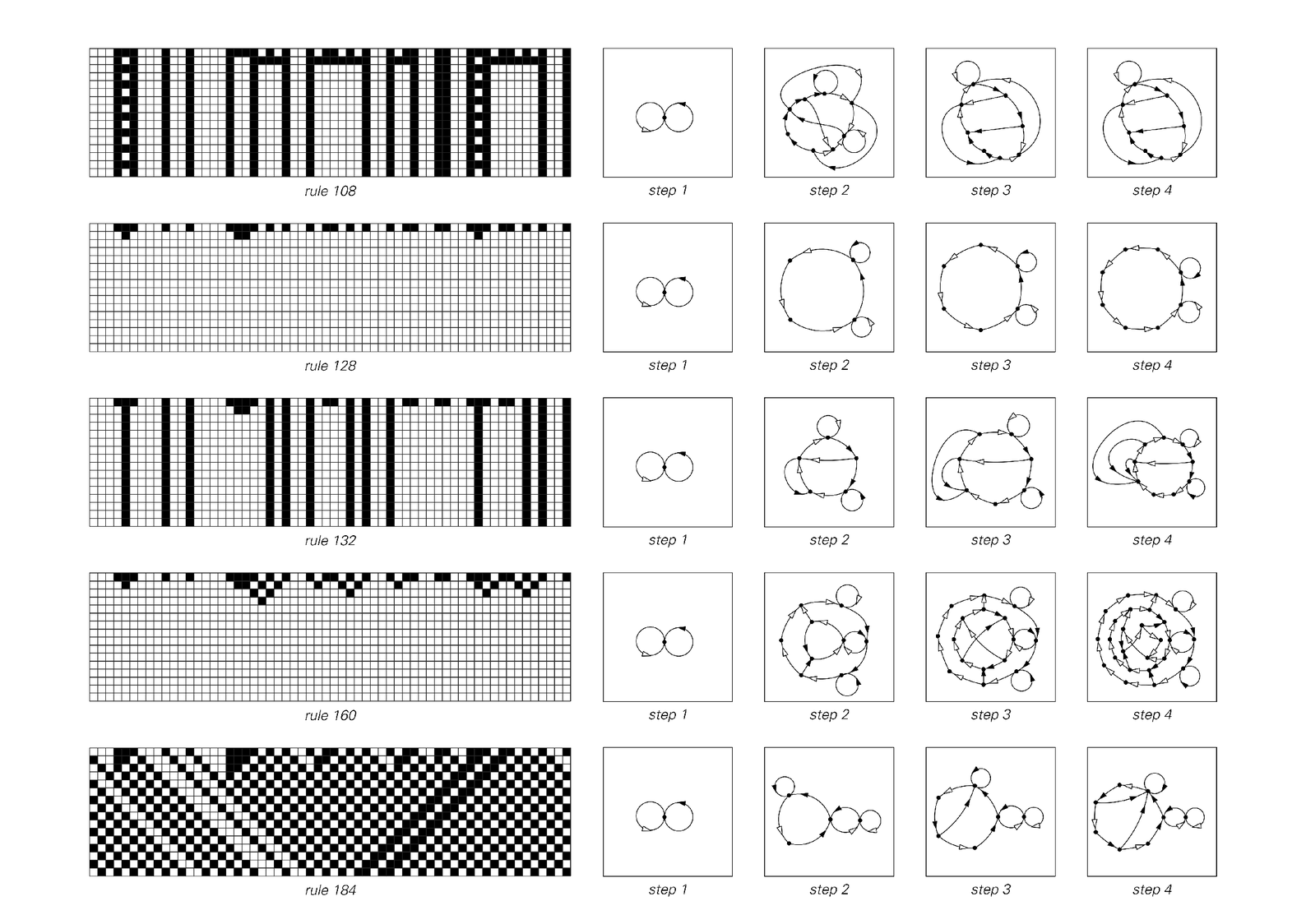So what happens with class 3 and 4 systems? The pictures on the facing page show a couple of examples. In rule 126, the only effect at step 2 is that black cells can no longer appear on their own: they must always be in groups of two or more. By step 3, it becomes difficult to see any change if one just looks at an explicit picture of the cellular automaton evolution. But from the network, one finds that now an infinite collection of other blocks are forbidden, beginning with the length 12 block ![]() . And on later steps, the set of sequences that are allowed rapidly becomes more complicated—as reflected in a rapid increase in the complexity of the corresponding networks.
. And on later steps, the set of sequences that are allowed rapidly becomes more complicated—as reflected in a rapid increase in the complexity of the corresponding networks.

Networks representing possible sequences of black and white cells that can occur at successive steps in the evolution of several class 1 and 2 cellular automata. These networks never have more than about t2 nodes after t steps.



